TI-84 Plus CE vs. Casio fx-9750GII
Overview
TI-84 Plus CE

See on Amazon (commission earned)
The TI-84 Plus has been the dominant graphing calculator in the industry for years. The TI-84 Plus CE is the newest version of Texas Instruments' TI-84 Plus line. It is dominant in the industry for some good reasons. It is easy to use, it has all the features that are needed for high school math, and by this point it is very widely known. The color screen on the TI-84 Plus CE is a great addition that also comes with a higher resolution. This makes things like graphed lines and complex expressions much easier to read. The TI-84 Plus CE begins to fall short when you start to look at the price and what you get in this calculator. Since it is so popular Texas Instruments can charge a lot more for this calculator even though it may not be that capable.
Casio fx-9750GII

See on Amazon (commission earned)
The Casio fx-9750GII is defiantly not at the top of the line when it comes to graphing calculator technology. However, it does most of the important things very well. Usability is a place that this calculator is very strong in. In fact, the two calculators in this comparison are some of the easiest to use out there. While the fx-9750GII is clearly the underdog in terms of capabilities and features, it does the basics and it does them very well. It also loses out on the hardware side of things. It uses old fashioned power methods and is a lot more bulky than the somewhat sleek TI-84 Plus CE. Where the Casio really has the TI-84 Plus CE beat, is value. Prices vary but you could easily be paying at least twice as much for a TI-84 Plus CE than a Casio fx-9750GII.
Capabilities
Apps
Both of these calculators will most likely have all of the apps that you will need for high school. The TI-84 Plus CE however is probably more well-suited.
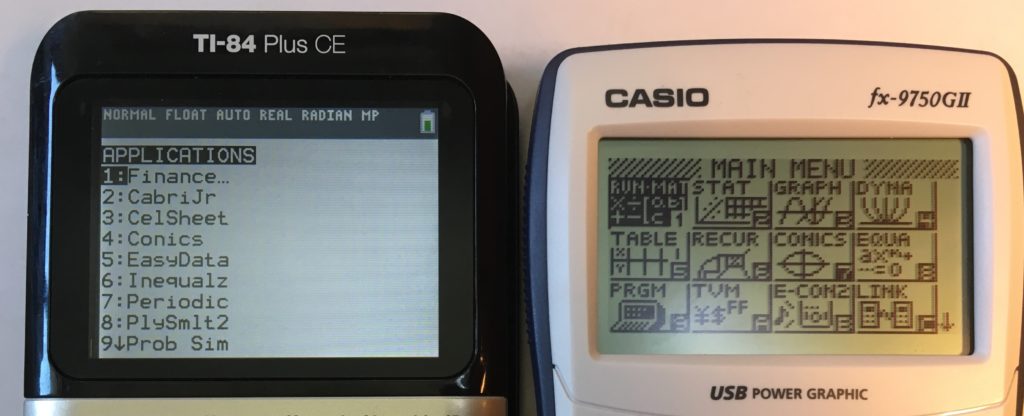
Each calculator has apps for, graphing conic sections, making programs, statistics, tables, and more. If you wan't a more detailed look at the different things these calculators can do, Check out our individual reviews. (TI-84 Plus CE Review or Casio fx-9750GII Review) here I will discuss mostly the differences between the two.
The TI-84 Plus CE has a lot more apps that go into deeper topics like a periodic table, or an app called "SciTools" that has features such as a unit converter and sig-fig calculator.
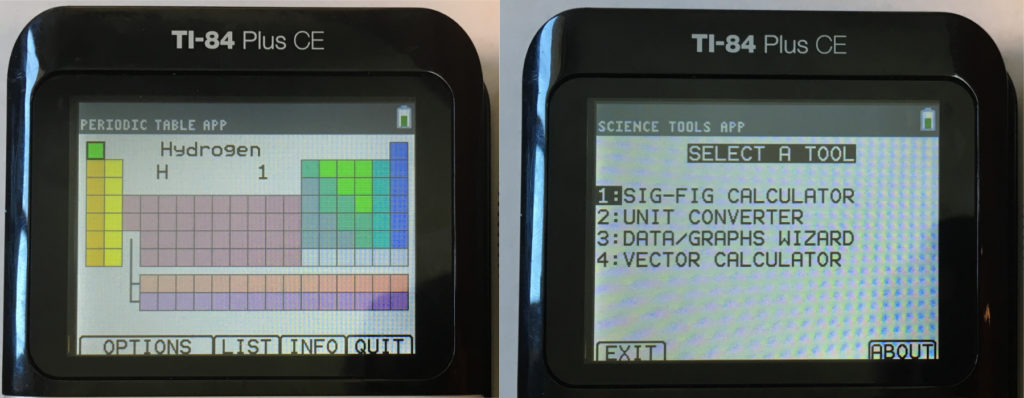
The Casio fx-9750GII contains mostly the apps for graphing different types of shapes/equations apps for some basic data and basic finances. The Casio's apps are all pretty capable, but you just won't find as many of them as you would on the TI-84 Plus CE.
Calculation
Neither of these calculators have a CAS, but that doesn't mean that they won't be able to do everything you need. Both calculators can simplify fractions, but neither one can give exact answers. For example, they would give a decimal approximation of 1/√3, whereas some calculators would give you the exact answer √3/3. (The Calculator on the far right is the TI-36X Pro)

The TI-84 Plus CE has TI's MATHPRINT feature which is super convenient for entering expressions. What I mean by this is that you can enter a fraction or powers and they will look like they do when written in a textbook. The Casio fx-9750GII on the other hand still uses classic calculator entrances. Below are the same two expressions entered on each calculator.
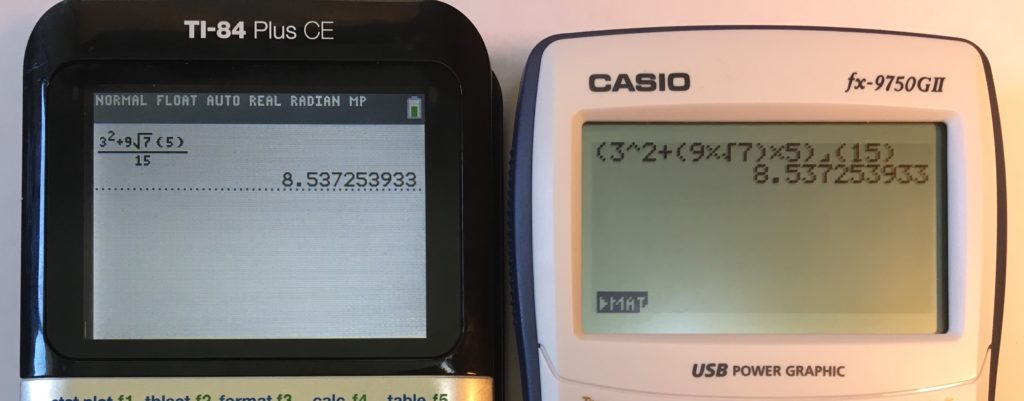
As you can see the TI-84 Plus CE's expression is much easier to read and was much easier type in.
For people who care about speed, the video below answers which calculator is faster, and by how much.
As you saw, the Casio was faster in every test in the video. This is a little embarrassing for the TI-84 Plus CE considering the price difference. It's important to note that, for the graphing at least, the TI-84 Plus CE is at a big disadvantage. It has to think about displaying many more points than the Casio fx-9750GII because of the higher resolution screen.
Graphing
We already know that the TI-84 Plus CE is much slower at graphing lines, but this is for good reason. The graphs on the TI-84 Plus CE are much nicer to look at and much easier to read. This is where the colored screen on the TI-84 Plus CE really comes in handy. As you can see in the images below it is much easier to see what's going on in the graph on the TI-84 than on the Casio.

Usability
These two calculators are great when it comes to usability. The TI-84 Plus CE has dominated in schools throughout the country, largely because of its usability. The menus are simple, the buttons are logical, and the whole operating system is very intuitive.
The Casio fx-9750GII is very user friendly as well. The buttons are laid out nice, and the operating system is, consistent, easy to use, and understand.
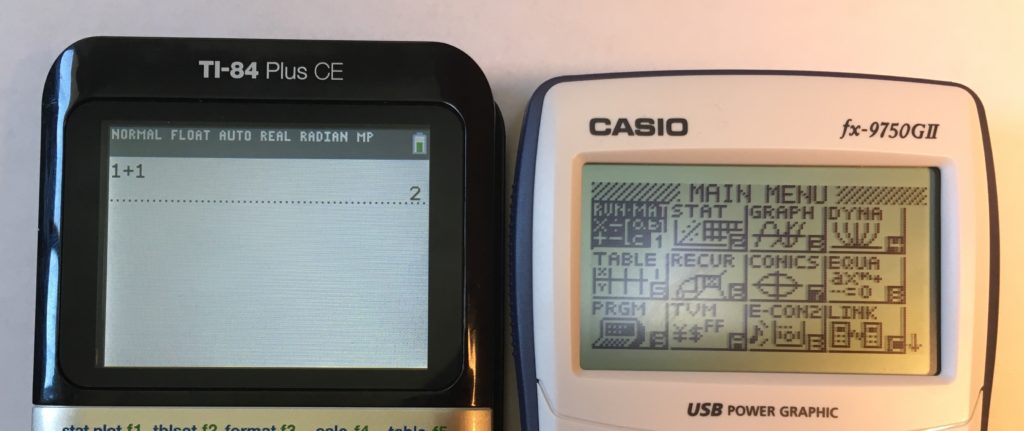
Overall though I would say that the TI-84 Plus CE has better usability for a couple of reasons. First of all, the TI-84's screen really does make it easier to use, not so much the color, but the higher resolution. On the TI-84, they are able to fit smaller text on the screen because of the resolution. This can help in menus and other places were a lot of information must be displayed at once.
Menus
Another fallback for the Casio is its menus. The fx series calculators have a tendency to use the function keys at the top of the keypad for almost all of the menus and selection options. This is great in some ways. It's nice to have access to quick selection without having to scroll with arrows, but the way that Casio lays it out on the screen isn't always the best.
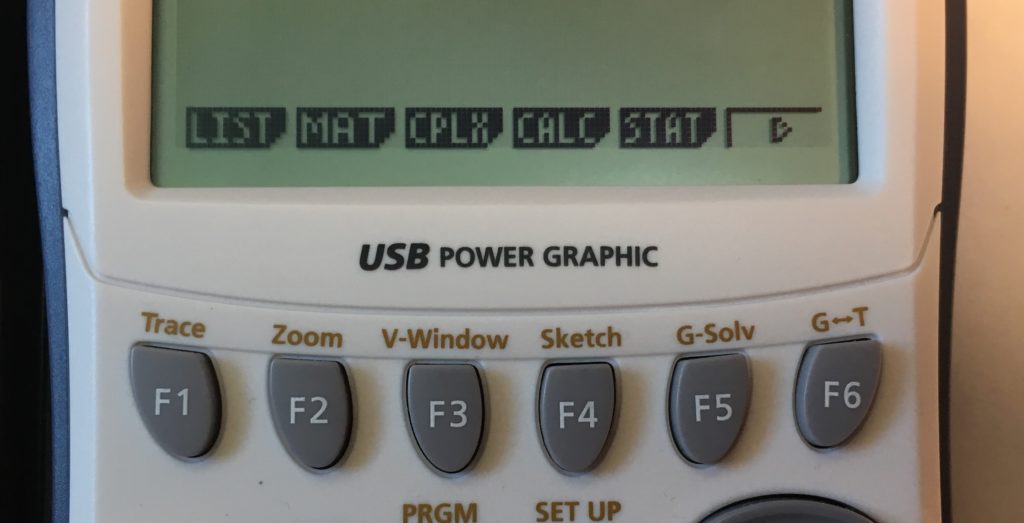
There are a lot of menus that I think are too big to use just the function keys as the menu interface. Just as an example, I'll refer to the programming interface. When you write a program all of the functions that you can input into the program are accessed through the function keys. This makes the whole system feel very crammed. It can also be somewhat confusing because Casio can only fit 3-4 letters on each menu item and you can't always tell what the abbreviations mean.
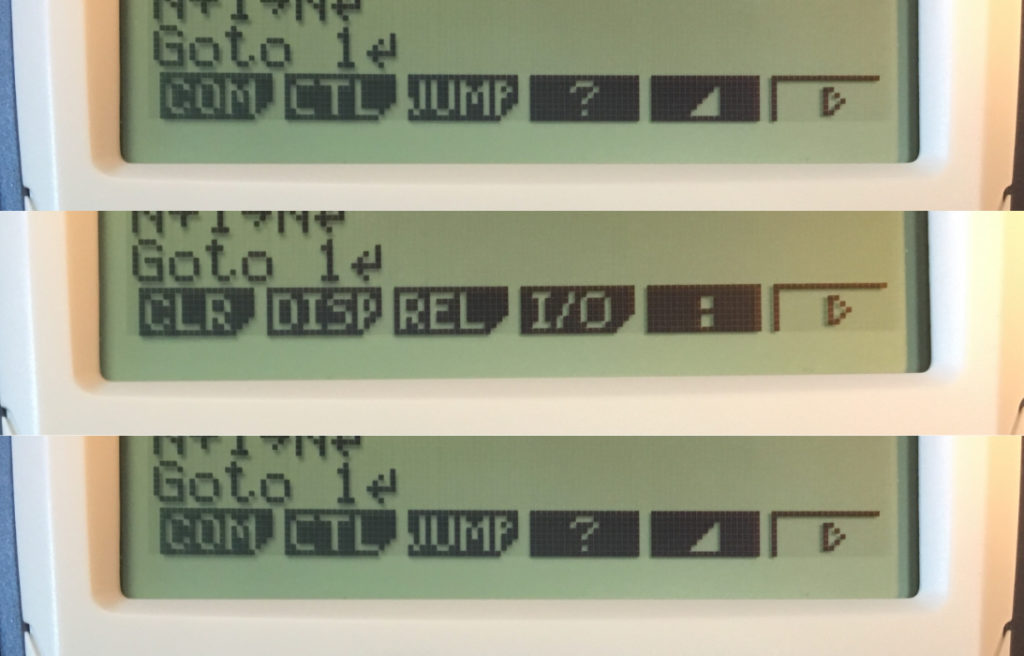
The TI-84, on the other hand, doesn't use selection keys unless there are only a handful of options to select. Most of the time you will get a menu that takes up the entire screen. I think this much better because you can see more options at once. There's also room to write out full words or names of functions, instead of having to cram things in with abbreviations.
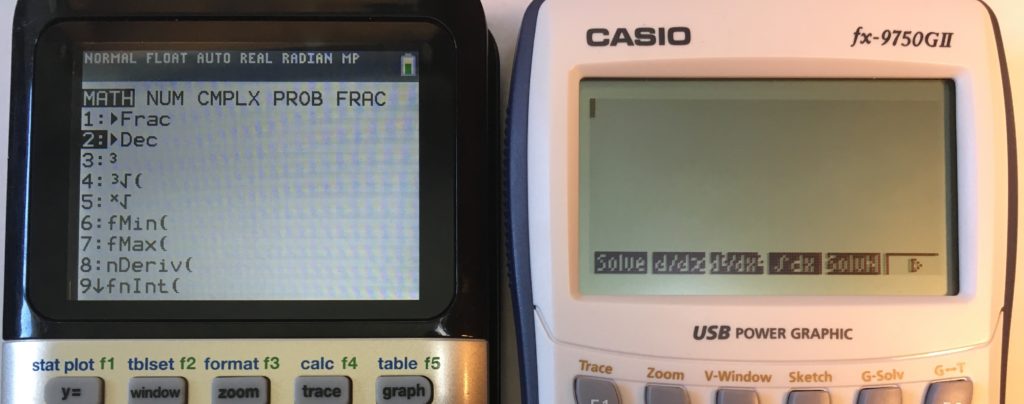
Hardware
Screen
The most obvious difference between these two calculators is their screens. In this area the TI-84 Plus CE is the clear winner. The TI-84 Plus CE has a screen resolution of 320 by 240 pixels while the Casio fx-9750GII has a resolution of 128 by 64.
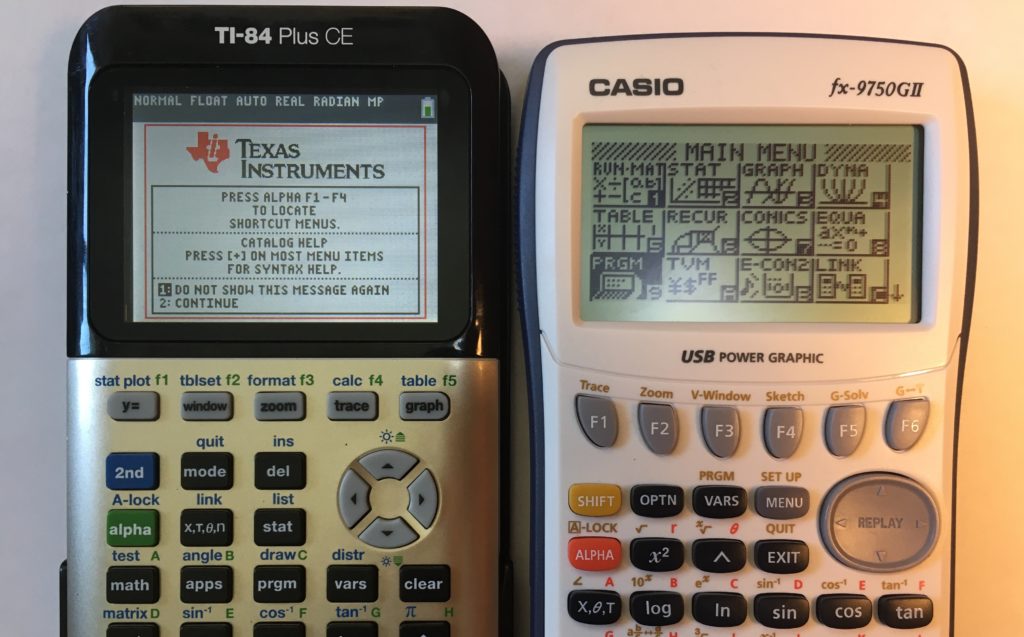
As we've said, the TI's screen is nicer for entering expressions/reading graphs, but it does slow the calculator.
Build
The TI-84 Plus CE wins this category as well, I think that it has a much nicer design. The Casio fx-9750GII is way bulkier and just looks like an older device. Below are the two calculators side by side. (TI-84 Plus CE on the left, Casio-9750GII on the left)

Power
One of the reasons that the Casio is so bulky is because it is powered the old fashioned way. To power the Casio, you have to use 4 AAA batteries. This also adds some significant weight to the calculator. The TI-84 on the other hand comes with a lithium ion rechargeable battery which you will likely never have to replace. The Casio uses way less power than the TI-84 because of the screen difference so you won't have to replace the batteries often, but its cheaper and easier just to charge your TI-84 Plus CE at the wall.
Conclusion
Both of these calculators are solid trustworthy graphing calculators that were built for high school math. You won't have trouble getting through school with either of these calculators. What it really comes down to is how much you are willing to spend, and what's important to you. Prices vary, but you will likely not be paying over $50 for a Casio fx-9750GII, whereas a TI-84 Plus CE could cost you around $125. This is a huge price difference, and what you are gaining by going with the TI-84 Plus CE is a couple more apps, a more popular operating system, and some better hardware like rechargeable batteries and a color screen. You just have to decide if these things are worth an extra $75 to you. If they're not, then the Casio fx-9750GII is defiantly the right choice.
See Next...
Individual Review of The TI-84 Plus CE >>
Full Individual Review of The Casio fx-9750GII >>
Contact Us
If you have any questions please don’t hesitate to get in touch by DMing us on Instagram, emailing us at mathclasscalculator@gmail.com or, leaving a comment below.
We are a participant in the Amazon Services LLC Associates Program, an affiliate advertising program designed to provide a means for us to earn fees by linking to Amazon.com. This means that we get a small commission any time an item is purchased through one of our links at no extra cost to the buyer. Please note that we have used all the products that are reviewed on this website and our goal is to provide good content and honest reviews.
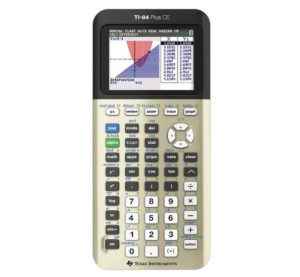
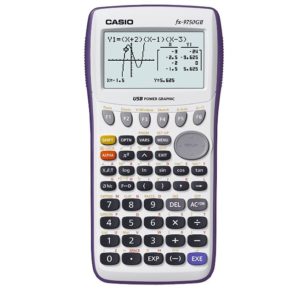


The full-screen menu vs. softkeys thing is really a personal choice. An advantage of softkeys is that you can see where you’re about to insert a command. Another advantage is if something is in the second or third page. A softkey menu will stay on that page, while a full-screen menu will have to be moved to that page every time.
Where Casio goofed up is: they had 6 menu items in 128 pixels, vs. the 5 of the TI-86, and each menu item has a 2-pixel wide border on each side. That’s 14 wasted pixels, over 10%! Also, Casio wastes one menu item for the next page arrow, while TI and HP both have a dedicated button for that.